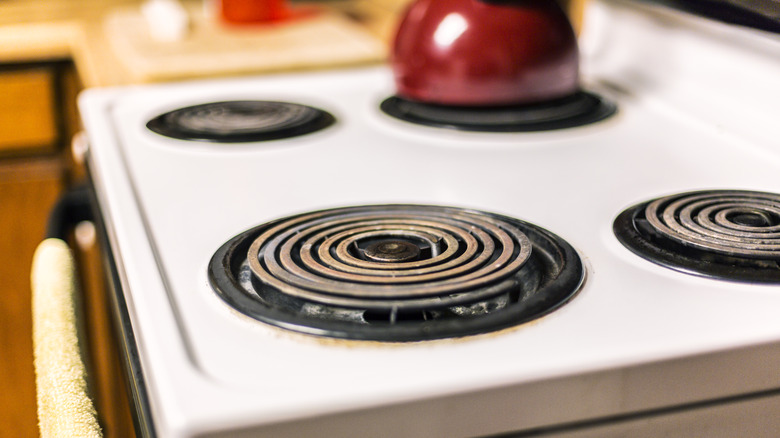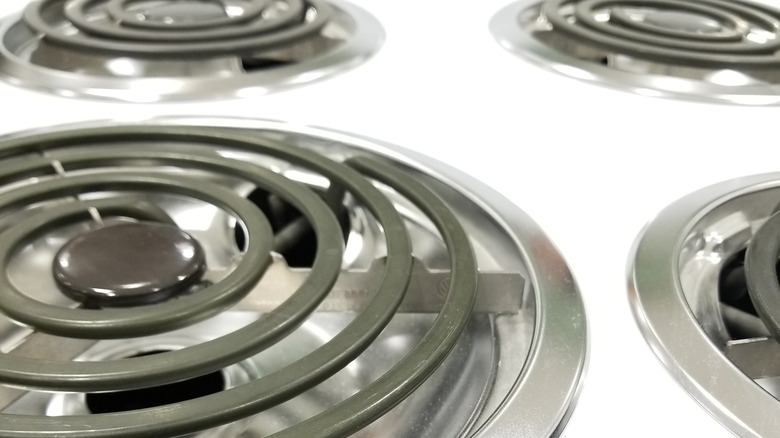How To Clean Stove Drip Pans Until They're Spotless
Let's admit it, some of us are messy cooks. Our partner comes in after we're done making dinner and the look on their face makes us suddenly realize we've absolutely destroyed every surface in sight. So, we get to cleaning. Some parts of the kitchen are easy — just wipe them off with a sponge — but others are harder to reach. The stovetop is a great example: There are so many nooks and crannies for food to hide in.
Luckily, there are drip pans designed to catch all of the overflow from your cooking. If you're staying on top of it, you should clean your drip pans every time you cook. Honestly, that seems a bit excessive, although it is true that the mess is going to be easier to clean before the food has dried on. If you want to stay on top of messes without having to deep clean daily, aim for once a week as a good compromise.
Wait until the burner is cool and then pull it out. Don't worry, you won't break it; it clips right in. Now that the burner is out of the way, you can simply lift the drip pan out from the stovetop. If the mess isn't bad, washing the drip pan with hot water and dish soap should do the trick. If it's been a while since you've cleaned, and the grime isn't coming off, don't worry there are still ways to tackle the problem.
When the grime won't go
There are a few different ways to try and get baked-in stains off of your drip pan. The classic method is to use vinegar and baking soda. After scraping off as much of the mess as possible, soak the pan in hot water for 15 minutes, followed by a 30-minute soak in vinegar. Once that's done, pour a good amount of baking soda over the pan and start scrubbing. Be sure to rinse it off when you're done.
If that doesn't work, the next step is to soak the drip pan in ammonia overnight. It's going to smell, so this is best done outside, but if you don't have access to a private outdoor area, you can use your bathtub instead. Place your drip pan in a sealable plastic bag and pour ¼ cup of ammonia into the bag with it. Wearing gloves is a good idea since ammonia shouldn't be allowed to touch your skin. This won't be enough ammonia to completely cover your drip pan, but that's fine; being sealed with the fumes is enough to break down most grime. Let it rest overnight, then (while still wearing gloves) wash it with soap and water. The ammonia should have loosened the grip of the food bits. Ammonia can be hazardous to the environment as well as people, so be sure to dispose of it safely. You can dilute the ammonia with water by following the steps outlined by the Minnesota Department of Agriculture.

